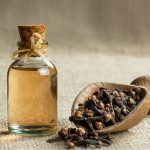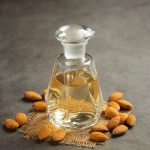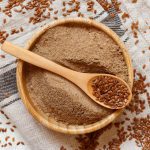Alarm bells inevitably tend to go off when you see your child scratching their head.…
Read MoreFrizz, split ends, and dandruff – a bad hair day can mean a bad day period. But the ancient science of ayurveda might have some hair care tips that can help you sail through the day with a gorgeous mane. Let’s check out what ayurvedic hair care routine looks like.
According to ayurveda, we are all composed of a combination of the five basic elements of air, fire, water, space, and earth. These elements form the three life forces or biological humors known as vata (air and space), pitta (fire and water), and kapha (earth and water). Though we all contain all three doshas one dosha is generally predominant which determines our body constitution or prakriti.
Hair care in ayurveda takes into account your prakriti or body constitution which also includes your hair type. Let’s take a look at an ayurvedic everyday hair care routine that can help keep your hair healthy. It includes aspects like:
According to ayurveda, a head and hair massage should be an integral part of your daily routine or dinacharya. Oiling is thought to strengthen the scalp and hair as well as provide nourishment to the hair follicles. [4]Ande, Amar N., and Swati K. Chobhe. “PDEAS International Journal of Research in Ayurved & Allied Sciences.” Let’s take a look at some of the factors that go into a good head and hair massage.
Different oils have different properties. You might want to factor in seasonal conditions and your prakriti while picking the oil that’s right for you.
Ayurveda also recommends herbal oils for tackling specific hair issues.
Ayurveda advocates a daily oil massage for your head and hair. You can use a small quantity (1/2 teaspoon) for this and you don’t need to wash it off since very little oil is being used. Once or twice a week you can go for a more intense massage – use about a tablespoon of hair oil and leave it on overnight (or at least an hour) before washing it off. Follow these steps for your head massage:
According to ayurveda, combing your hair daily helps to keep it clean. It is thought to get rid of raja (pollen) as well as mala (dirt or dust). Here are a few tips that you should keep in mind while combing your hair:
Ayurveda does not recommend a hair pack for healthy hair. However, herbal hair packs are used for specific purposes such as tackling hair fall, improving hair quality, or treating dandruff. Herbal powders are thought to offer benefits such as:
Finely powdered herbs can be mixed with water, oils or milk to prepare a paste that can be used as a hair pack. Here are a few tips to keep in mind:
Hair care experts suggest that you should be guided by how oily your scalp is when deciding how often you wash your hair. If your scalp is very oily you may need to wash it daily to keep it clean. However, do keep in mind excessive washing can lead to hair becoming dry and brittle, as well as an irritated, itchy scalp. According to ayurveda, it’s a good idea to wash your hair with herbal hair powder or shampoo once or twice a week. This can be done after a head massage (where you let the oil sit overnight or at least an hour). Traditionally, powdered herbs such as amla, aritha, shikakai, heena, bhringraj etc. have been used to clean hair without disturbing the natural functioning of the scalp. Ideally, you should use cool water or lukewarm water (this helps remove hair oil) to wash your hair. Very hot water can damage your hair.[7][How to Keep Your Hair Healthy This Winter](https://health.clevelandclinic.org/your-best-strategies-for-beautiful-hair-in-the-winter/ “How to Keep Your Hair Healthy This Winter”). Cleveland … Continue reading [8][The Dirty Truth About Washing Your Hair](https://health.clevelandclinic.org/the-dirty-truth-about-washing-your-hair/ “The Dirty Truth About Washing Your Hair”).Cleveland Clinic.
Ayurveda recommends regular trimming of hair. And we’ve all experienced its benefits – it helps to cut out split ends and damaged parts of your hair. So how often should you trim your hair? Some experts suggest that you should get a trim once every 45 days.
Ayurveda advocates covering your hair when you go out to protect your hair from dirt, pollution, the heat of the sun, and wind. So, check out scarves, wide brimmed hats and umbrellas. You could even use a traditional turban if you’re up for it![9]Ande, Amar N., and Swati K. Chobhe. “PDEAS International Journal of Research in Ayurved & Allied Sciences.”
Ayurveda lays a lot of importance on a healthy, balanced diet which can keep your whole body, including your hair healthy. According to ayurveda, foods which have tikta (bitter), madhur (sweet), and kashaya (astringent) taste promote hair health and hair growth. Meanwhile, amla (sour), kshar (corrosive), and lavan (salty), foods when consumed in excessive quantities are thought to block hair growth and damage hair. The following are some examples of food based on their taste:
Meanwhile, modern science recognizes that having a diet that is sufficient in nutrients such as vitamin A, Vitamin C, Vitamin D, iron, and biotin is important for keeping your hair healthy. A healthy balanced diet will ensure that you get all the nutrients that you need.[11][How to Keep Your Hair Healthy This Winter](https://health.clevelandclinic.org/your-best-strategies-for-beautiful-hair-in-the-winter/ “How to Keep Your Hair Healthy This Winter”). Cleveland … Continue reading
Ayurveda also considers the daily practice of nasya therapy to be important for healthy hair. Nasya is the practice of instilling beneficial or medicinal oils such as anu taila in the nasal cavities at very low doses (2 drops). This is thought to protect against premature graying as well as hair fall. A registered ayurvedic physician can teach you the procedure for nasya therapy.[12]Ande, Amar N., and Swati K. Chobhe. “PDEAS International Journal of Research in Ayurved & Allied Sciences.” [13][Pratimarsha Nasya](http://www.ccras.nic.in/content/pratimarsha-nasya “Pratimarsha Nasya”). Central Council for Research in Ayurvedic Sciences.
References
| ↑1 | [What Is Ayurveda?](https://www.verywellhealth.com/what-is-ayurveda-88174 “What Is Ayurveda?”).Verywell Health. |
|---|---|
| ↑2, ↑4, ↑9, ↑10, ↑12 | Ande, Amar N., and Swati K. Chobhe. “PDEAS International Journal of Research in Ayurved & Allied Sciences.” |
| ↑3 | Bhatkoti, Mayank, Shailander Singh, Payal Thakur, and Rajdip Rao. “UNDERSTANDING SKIN IN AYURVEDIC PRESPECTIVE.” Pharma Science Monitor 9, no. 1 (2018). |
| ↑5, ↑7, ↑11 | [How to Keep Your Hair Healthy This Winter](https://health.clevelandclinic.org/your-best-strategies-for-beautiful-hair-in-the-winter/ “How to Keep Your Hair Healthy This Winter”). Cleveland Clinic. |
| ↑6 | [HAIR STYLING WITHOUT DAMAGE](https://www.aad.org/public/diseases/hair-loss/hair-care/styling “HAIR STYLING WITHOUT DAMAGE”).American Academy of Dermatology Association. |
| ↑8 | [The Dirty Truth About Washing Your Hair](https://health.clevelandclinic.org/the-dirty-truth-about-washing-your-hair/ “The Dirty Truth About Washing Your Hair”).Cleveland Clinic. |
| ↑13 | [Pratimarsha Nasya](http://www.ccras.nic.in/content/pratimarsha-nasya “Pratimarsha Nasya”). Central Council for Research in Ayurvedic Sciences. |


With 13+ years of experience in Ayurvedic consultation & Allopathic treatment (ICU & General Hospital), Dr. Kalpana Dongare is adept in the treatment of infertility, PCOD, Joint disease, Skin diseases, etc with more than 95% patient follow up and more than 80% success rate. She is also an expert in all types of Panchkarma procedures.

Alarm bells inevitably tend to go off when you see your child scratching their head.…
Read More
Sometimes hair loss can be caused by fairly simple things like hot oil hair treatments,…
Read More
We can’t help but get a little worried when we notice hair falling out as…
Read More
Don’t we all feel a tinge of envy when we see a shampoo ad? Who…
Read More